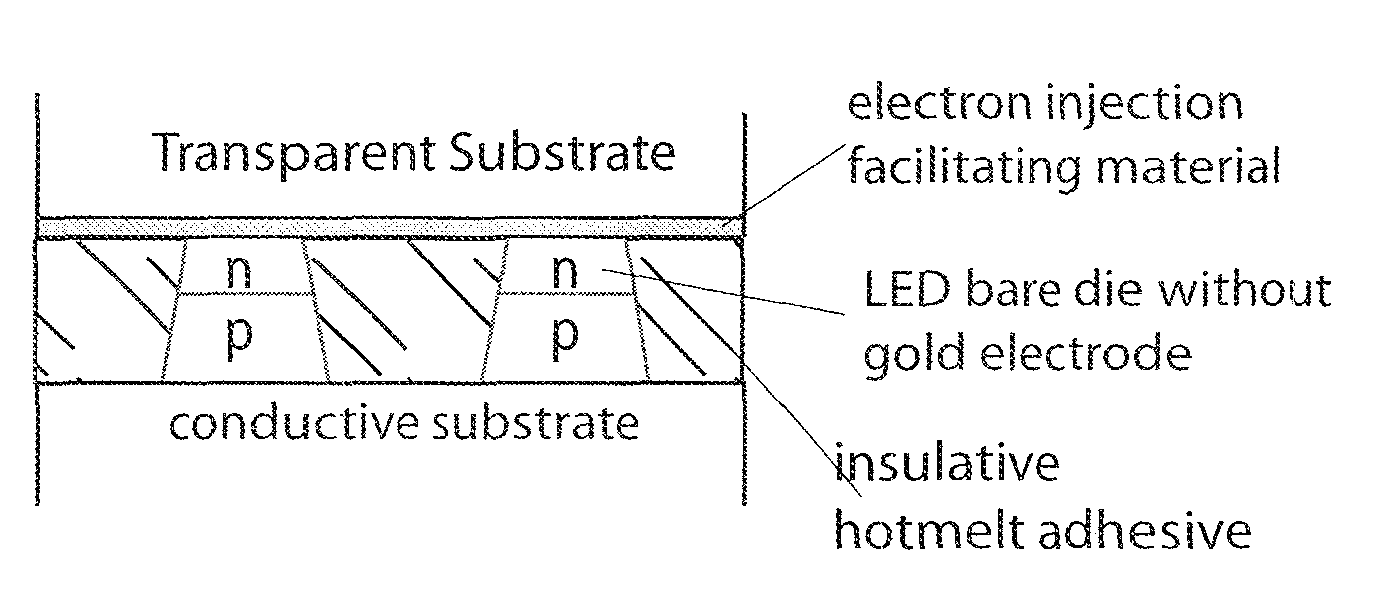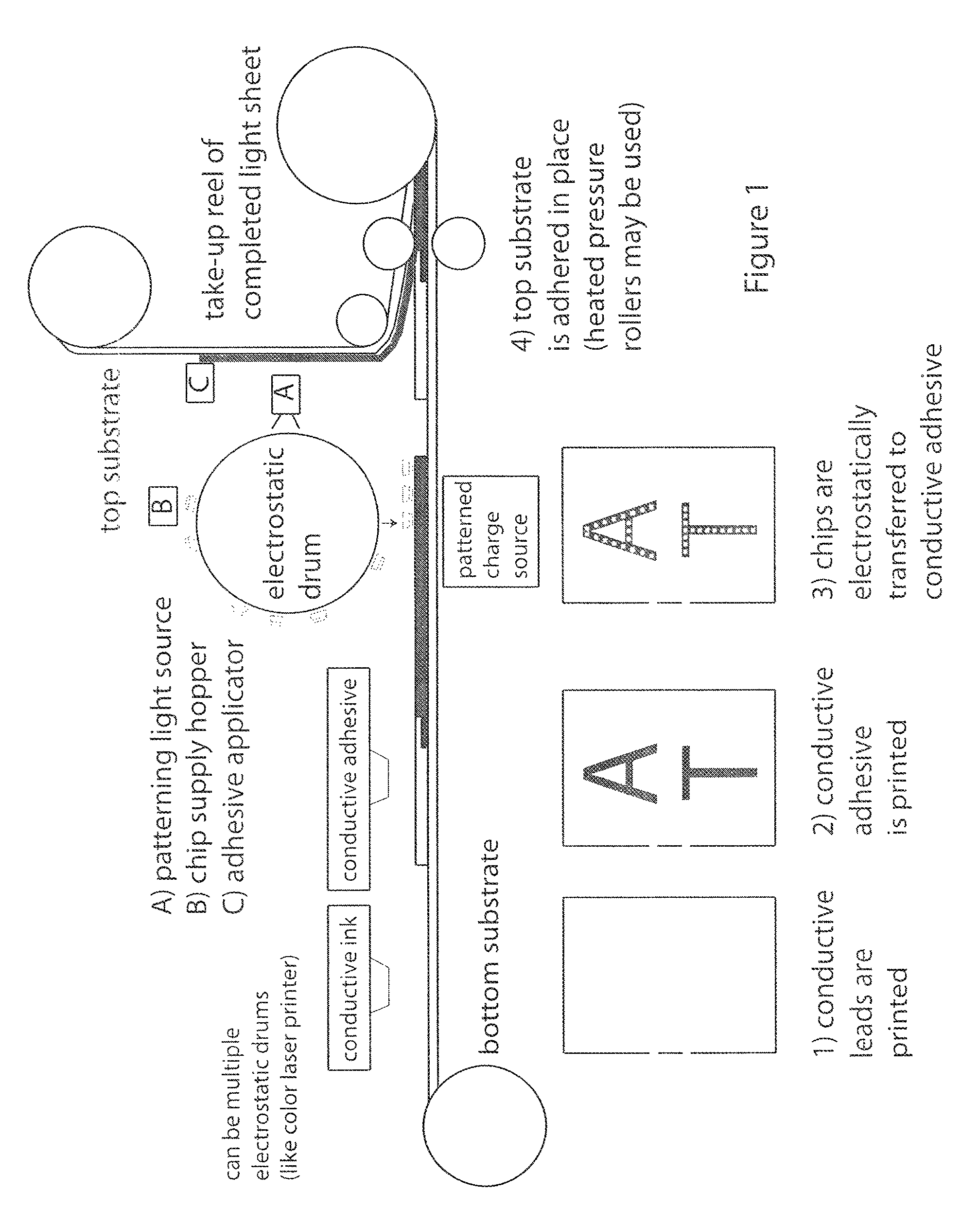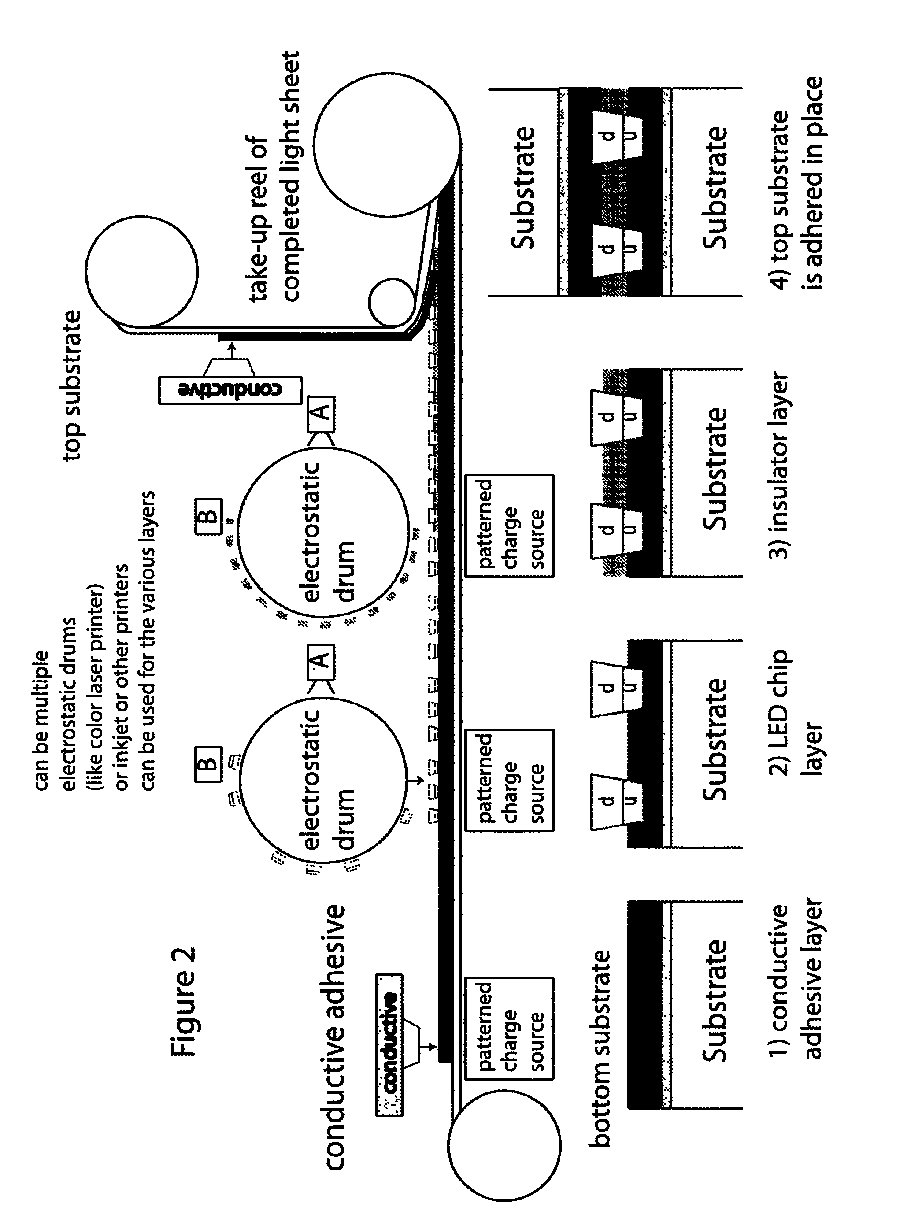Solid state light sheet and encapsulated bare die semiconductor circuits with electrical insulator
a semiconductor circuit and solid-state light sheet technology, applied in the direction of optics, radio frequency control devices, instruments, etc., can solve the problems of high the requirement of a high-intensity photo-radiation source, and the cost of forming the lamp and then soldering the lamp to the printed circuit board is a relatively expensive process, and achieves a high density of die packing.
- Summary
- Abstract
- Description
- Claims
- Application Information
AI Technical Summary
Benefits of technology
Problems solved by technology
Method used
Image
Examples
Embodiment Construction
[0384]For purposes of promoting an understanding of the principles of the invention, reference will now be made to the embodiments illustrated in the drawings and specific language will be used to describe the same. It will nevertheless be understood that no limitation of the scope of the invention is thereby intended, there being contemplated such alterations and modifications of the illustrated device, and such further applications of the principles of the invention as disclosed herein, as would normally occur to one skilled in the art to which the invention pertains.
[0385]FIG. 1 illustrates the inventive method for manufacturing a patterned light active sheet. In accordance with the present invention, a solid-state light active sheet, and a method for manufacturing the same, is provided. The solid-state light active sheet is effective for applications such as flexible solar panels and light sensors, as well as high efficiency lighting and display products. The inventive light she...
PUM
 Login to View More
Login to View More Abstract
Description
Claims
Application Information
 Login to View More
Login to View More - R&D
- Intellectual Property
- Life Sciences
- Materials
- Tech Scout
- Unparalleled Data Quality
- Higher Quality Content
- 60% Fewer Hallucinations
Browse by: Latest US Patents, China's latest patents, Technical Efficacy Thesaurus, Application Domain, Technology Topic, Popular Technical Reports.
© 2025 PatSnap. All rights reserved.Legal|Privacy policy|Modern Slavery Act Transparency Statement|Sitemap|About US| Contact US: help@patsnap.com



